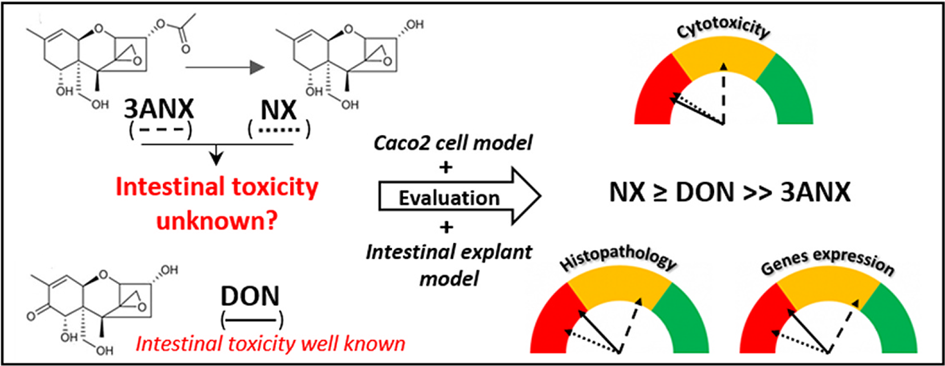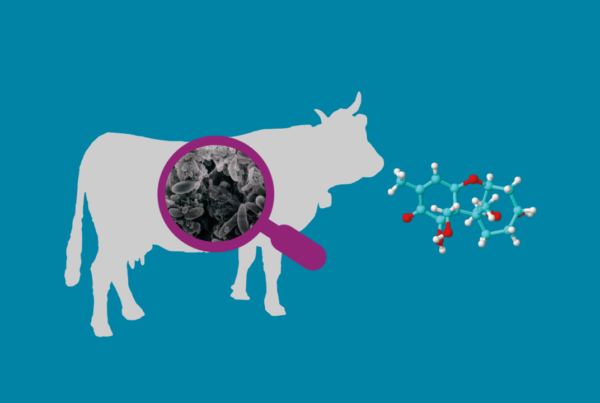NX and its acetylated form 3ANX are two new type A trichothecenes produced by Fusarium graminearum. NX and 3ANX are structurally similar to the type B trichothecenes deoxynivalenol (DON) and 3-ADON respectively. Like DON, NX is cytotoxic, inhibits protein synthesis, triggers oxidative stress and has a pro-inflammatory effect.

Recently, Pierron et al. investigated the intestinal toxicity of these newly discovered toxins comparatively to DON, using enterocyte-like Caco-2 cells and porcine intestinal explants. The viability of intestinal cells exposed to NX resembled that of DON whereas 3ANX showed lower cytotoxicity. Histological observations also indicated that NX caused greater changes to intestinal explants than DON; 3ANX being the least potent. This correlated the effect of the three toxins on intestinal gene expression profile, which indicated NX has more impact on intestinal gene expression than DON, and 3ANX less impact. The same signaling pathways were impacted by the three toxins, particularly inflammatory and immune responses.
Meanwhile, NX modulated more genes than DON or 3ANX. The upregulation of inflammatory genes may be the cause of the modification and degradation of the intestinal tissues. It is expected that this damage of the intestinal morphology will impact the barrier function and intestinal absorption.
All in all, the results indicate that NX and 3ANX have similar toxic patterns than DON, but with different degrees of toxicity: NX > DON >> 3ANX. In this regard, it would be relevant to include NX in the comprehensive risk analysis linked to the presence of trichothecenes in feeds.
Reference: Pierron et al., 2022. Intestinal toxicity of the new type A trichothecenes, NX and 3ANX. Chemosphere, 288, 132415. https://doi.org/10.1016/j.chemosphere.2021.132415




